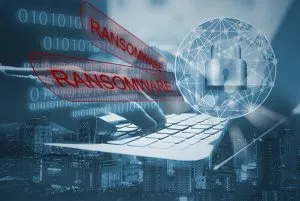Ransomware attacks against local governments are on the rise. From schools to police forces, many different types of crucial public sector organizations have been targeted over the past several years. In 2019 alone, more than 70 known cyberattacks on government institutions have taken place. The 2019 State of Cybersecurity Study found that, even when disclosure is mandated by law, some institutions don’t report attacks or breaches. So, it’s likely that the actual number of attacks is much higher.
With the rise of attacks targeting governments, here are a few ways public sector organizations can protect themselves from a cyberattack and handle one effectively should prevention techniques fail.
Datto's Global State of the Channel Ransomware Report 2019 revealed that the most successful technique for mounting a cyberattack is planting ransomware in phishing emails. An unsuspecting employee who opens a phishing email then becomes the catalyst for the attack. This is why education is a vital component of a governmental organization’s prevention strategy. Employees must have a proper understanding of how to keep their computers protected from a potential attack and how to spot a potentially dangerous email. It is also essential to continue to share resources with employees and hold training sessions on an ongoing basis. Hackers continuously adapt their attack methods to overcome the latest safeguard technology—we should all be adapting our skills, too.
Be Proactive With Preventive Measures
As is often the case, the best form of protection is prevention. This means setting up proper safeguards to stop an attack before it has a chance to infect even a single computer. The FBI has several suggestions for effectively implementing a prevention strategy. It starts with basic security measures that go a long way. Public sector organizations that deal with sensitive information should have strong spam filters, firewalls to guard against malicious IP addresses, processes for operating system patches and updates, and next-generation antivirus software in place. It’s not enough to simply install and implement these safeguards and then forget about them. Instead, prevention measures must be continuously tested and optimized to ensure that data continues to be safeguarded.Education is a Key Component of Prevention

When Prevention Fails: Mitigating Damage and Downtime
Even the best-laid plans sometimes fail. So, what happens if, despite all your preventive efforts, a cyberattack occurs anyway? Several procedures can be put into place to ensure that, even if an attack does occur, there’s minimal damage and downtime. This is especially crucial for government organizations that provide essential services and house sensitive information.Your Backup Plan
In the event of an attack, organizations should have a disaster recovery plan in place that includes backup and disaster recovery software. Local backup images might be enough to protect your data, but since ransomware can encrypt backups, take protection one step further and replicate backup images to a cloud system. This ensures that your files will still be safe and easy to recover.Don’t Pay Up
Finally, should your organization be the target of a cyberattack, it’s vital that you do not pay the ransom. Paying the ransom not only encourages hackers to continue to mount attacks but also signals to these groups that your organization is vulnerable. This may make you a likely target for future attacks. Despite becoming a target for hackers and ransomware gangs, public sector organizations have many ways to prevent and recover from an attack. With proactive strategies in place, both government agencies and the people they serve will be better protected.You May Also Like
- Government
How State and Local Governments Can Keep Private Citizen Data Private With a Unified Data Protection Strategy
January 11th, 2024 - Government Law Enforcement
6 Ways State and Local Governments Can Strengthen SaaS Data Protections
October 31st, 2023